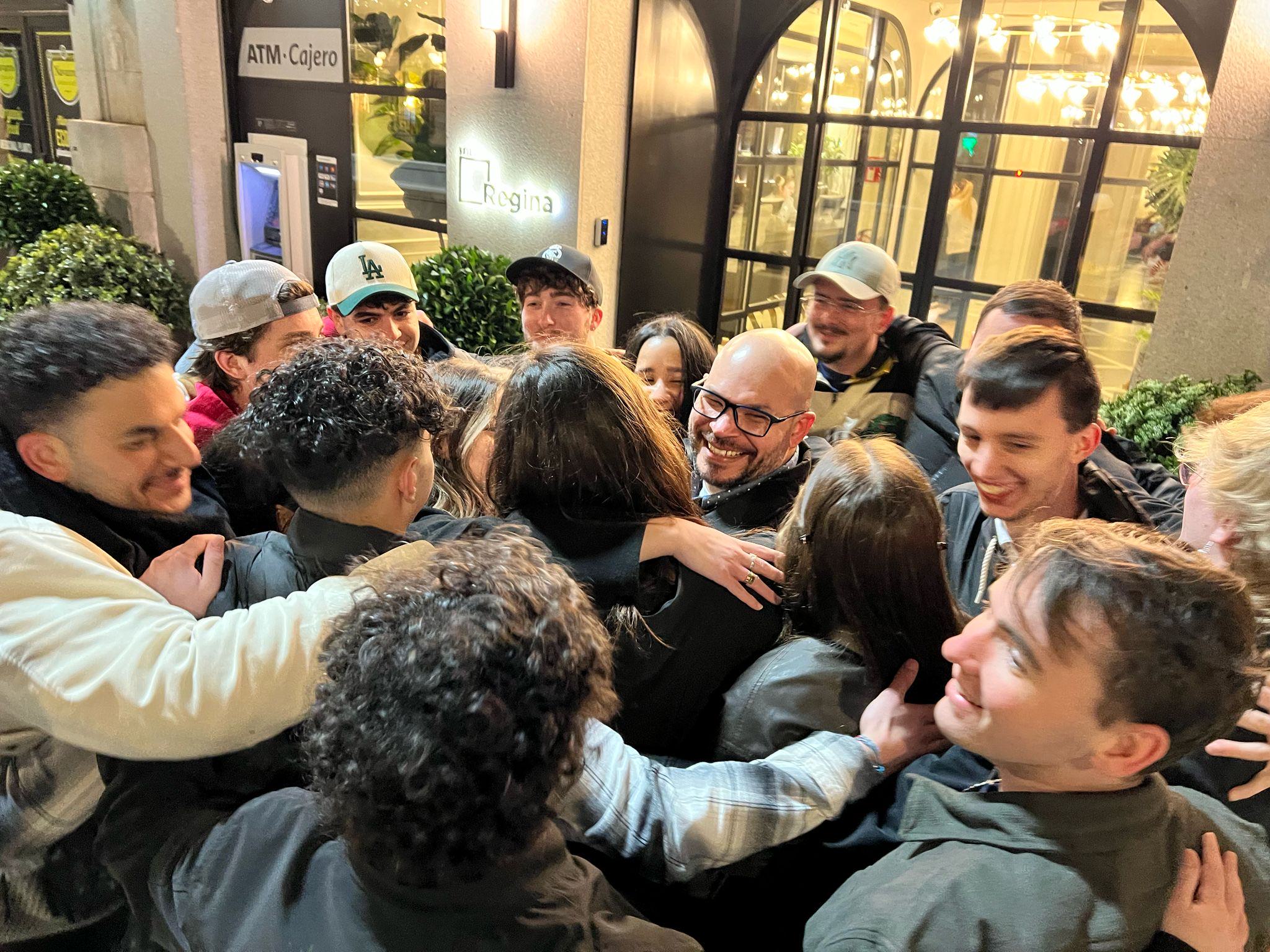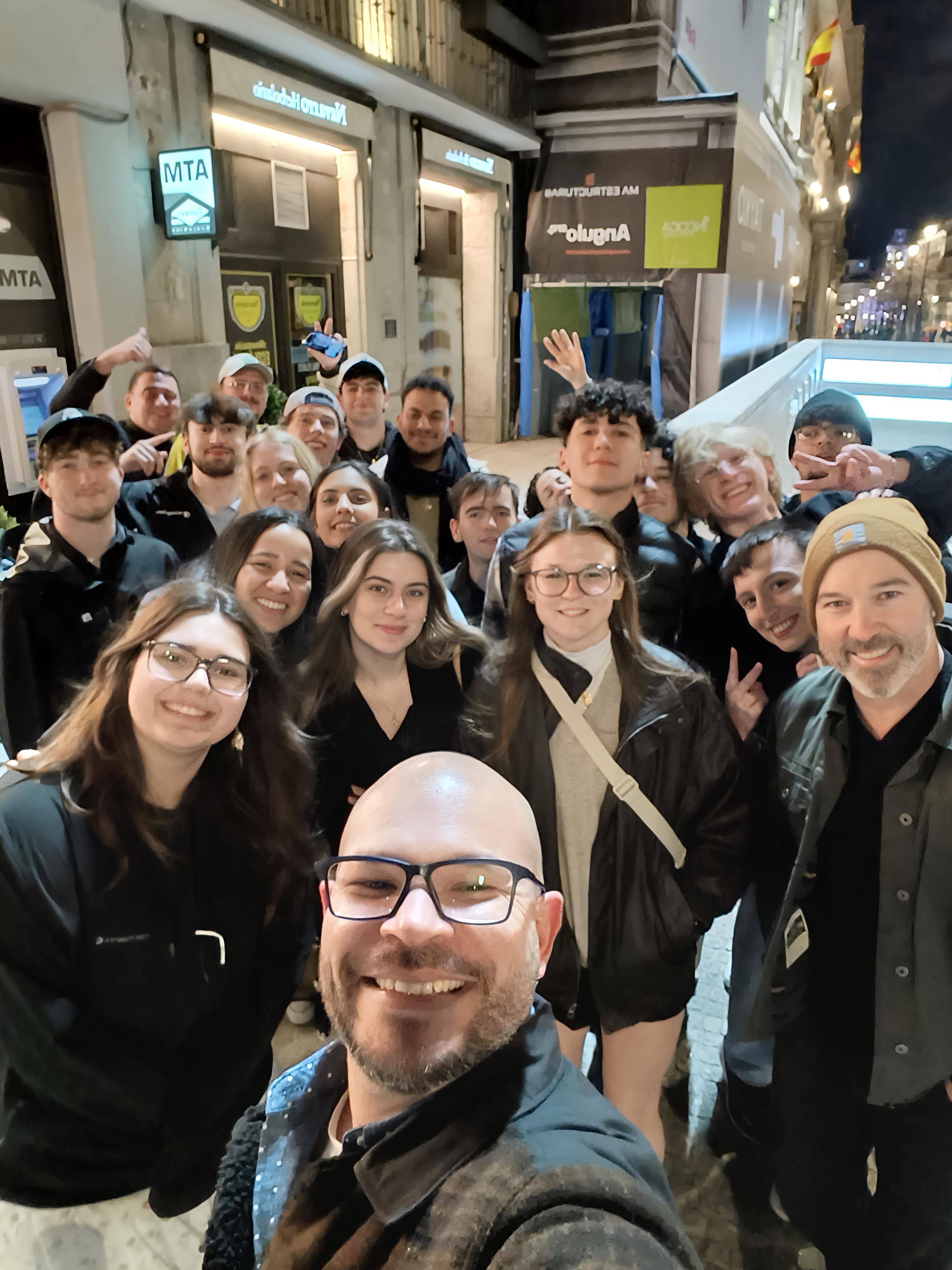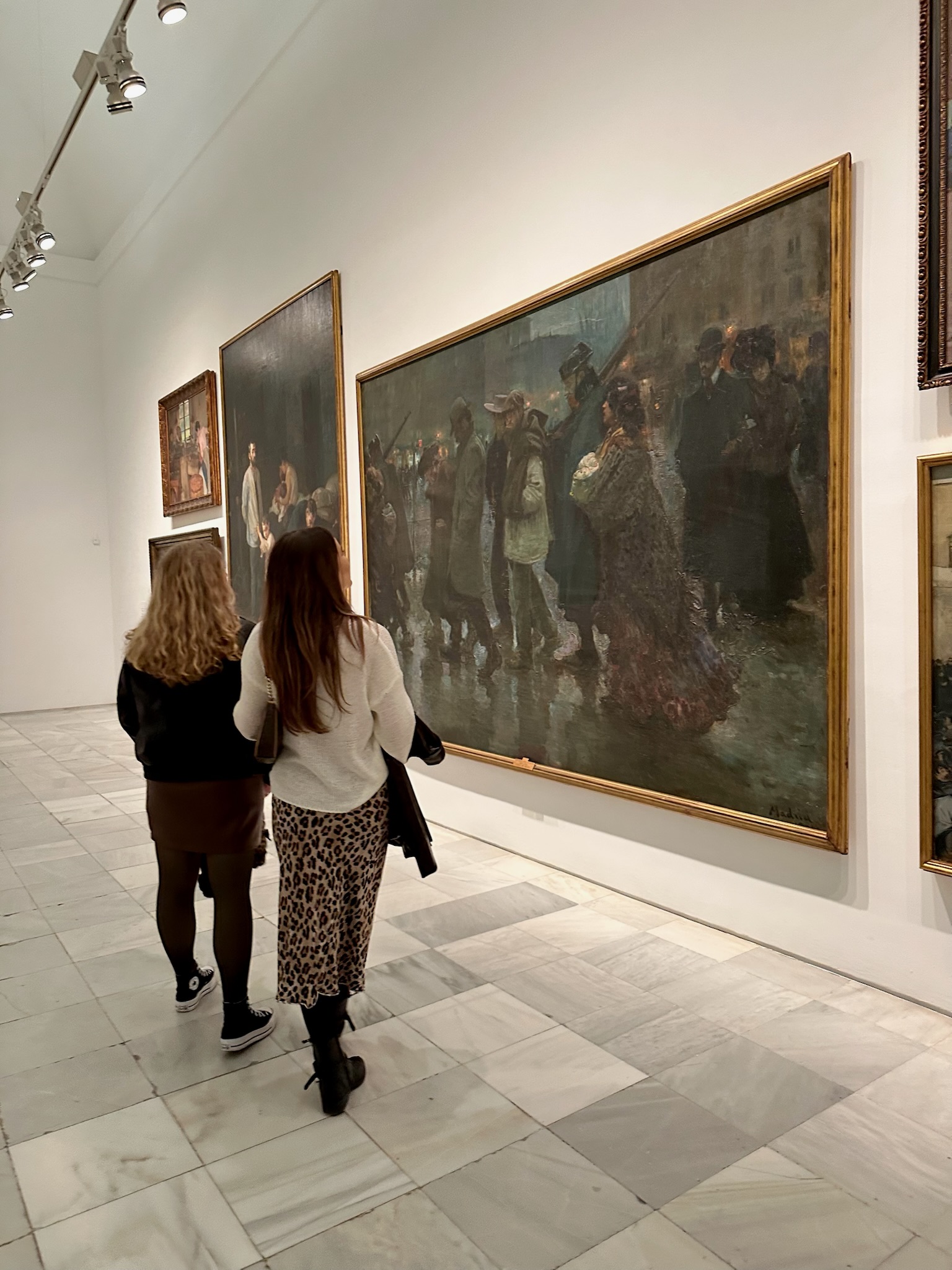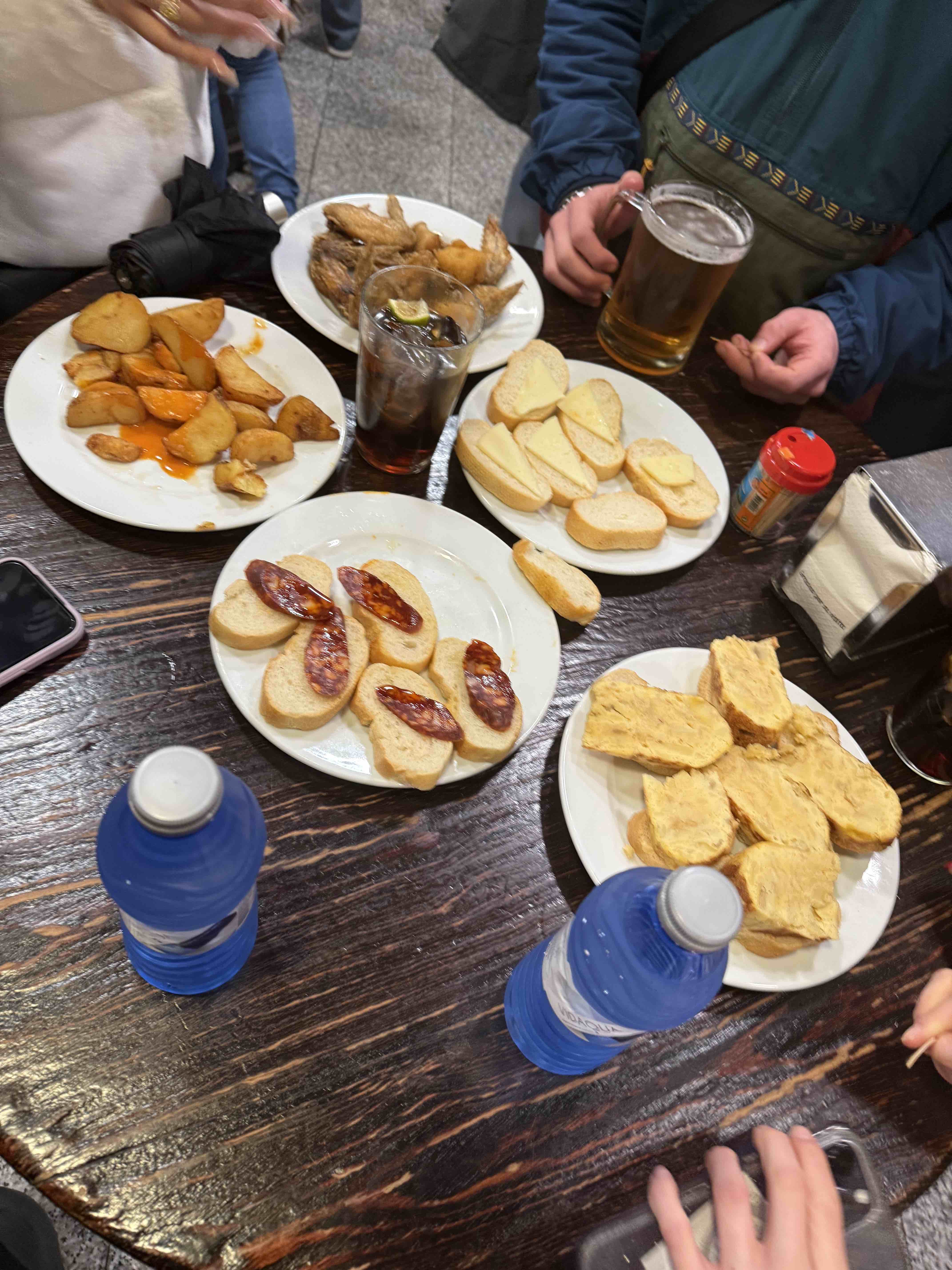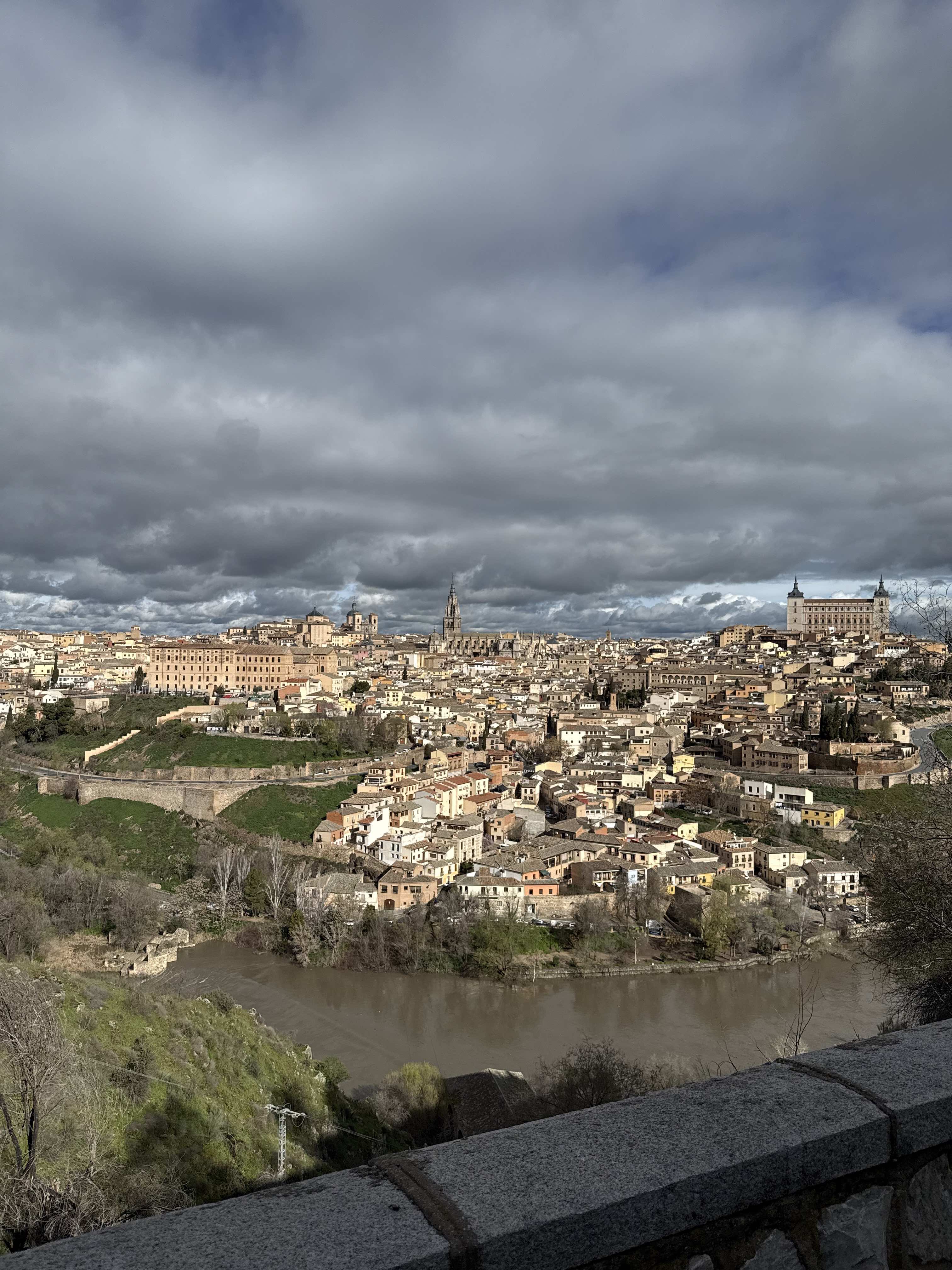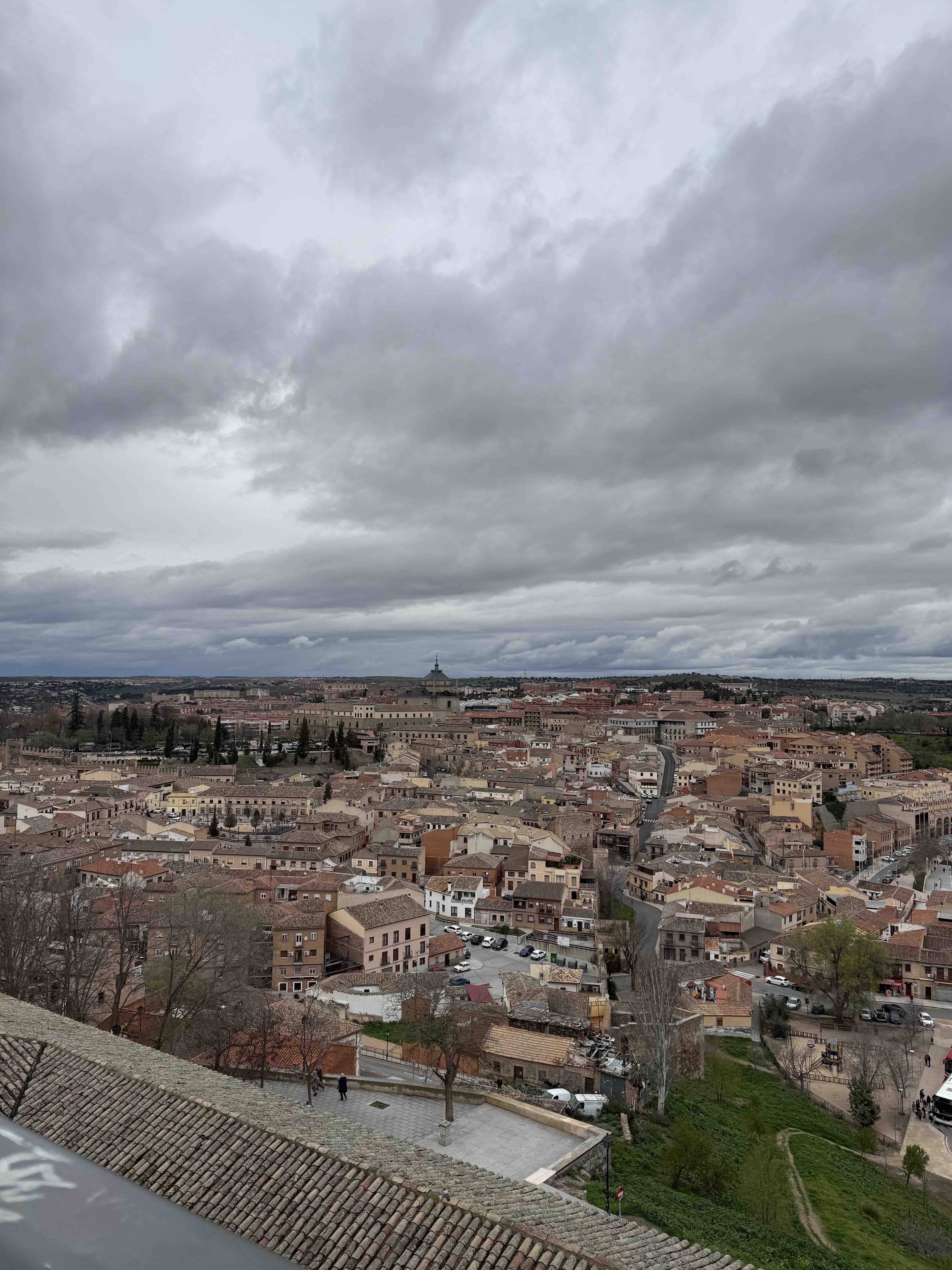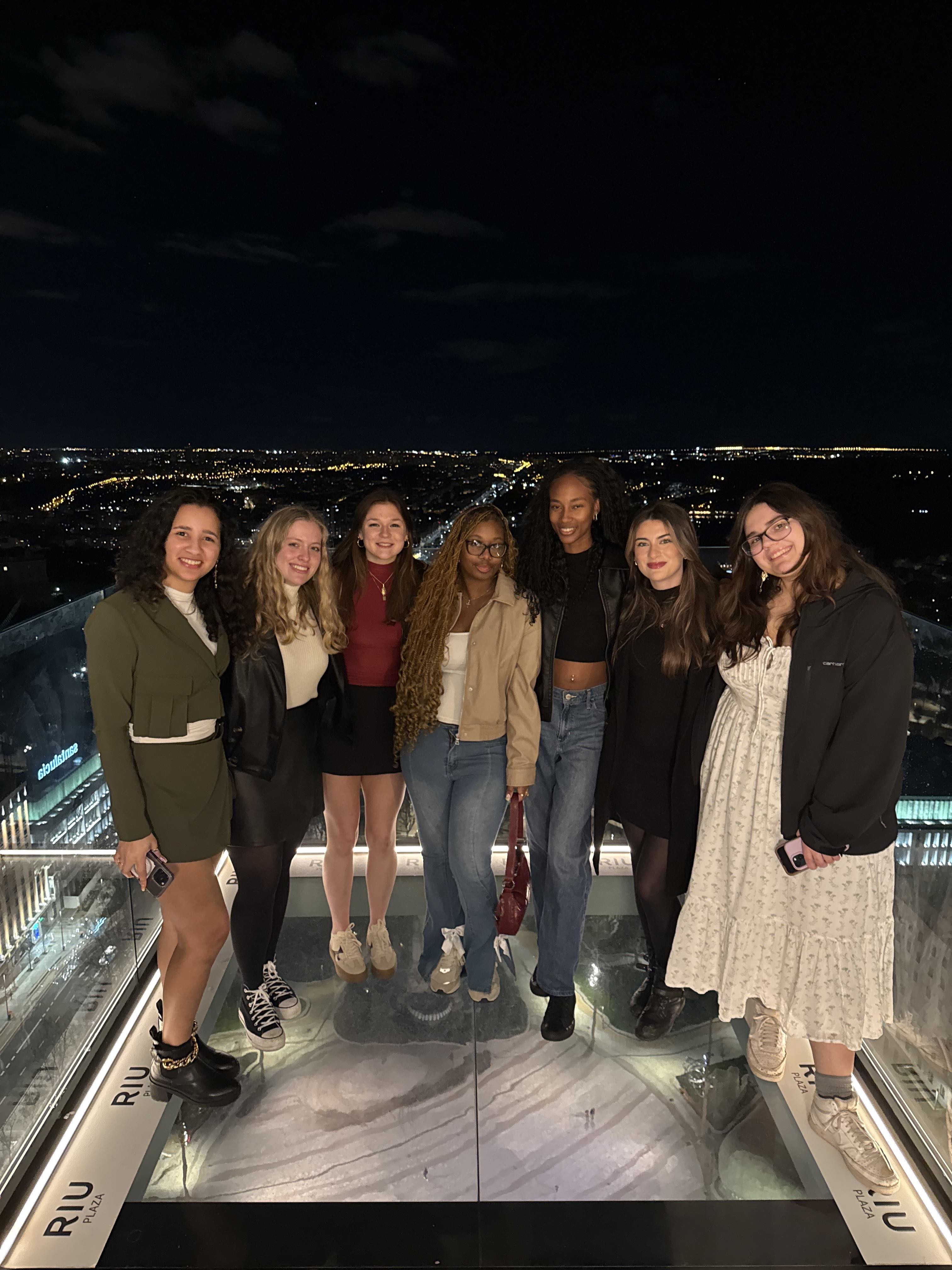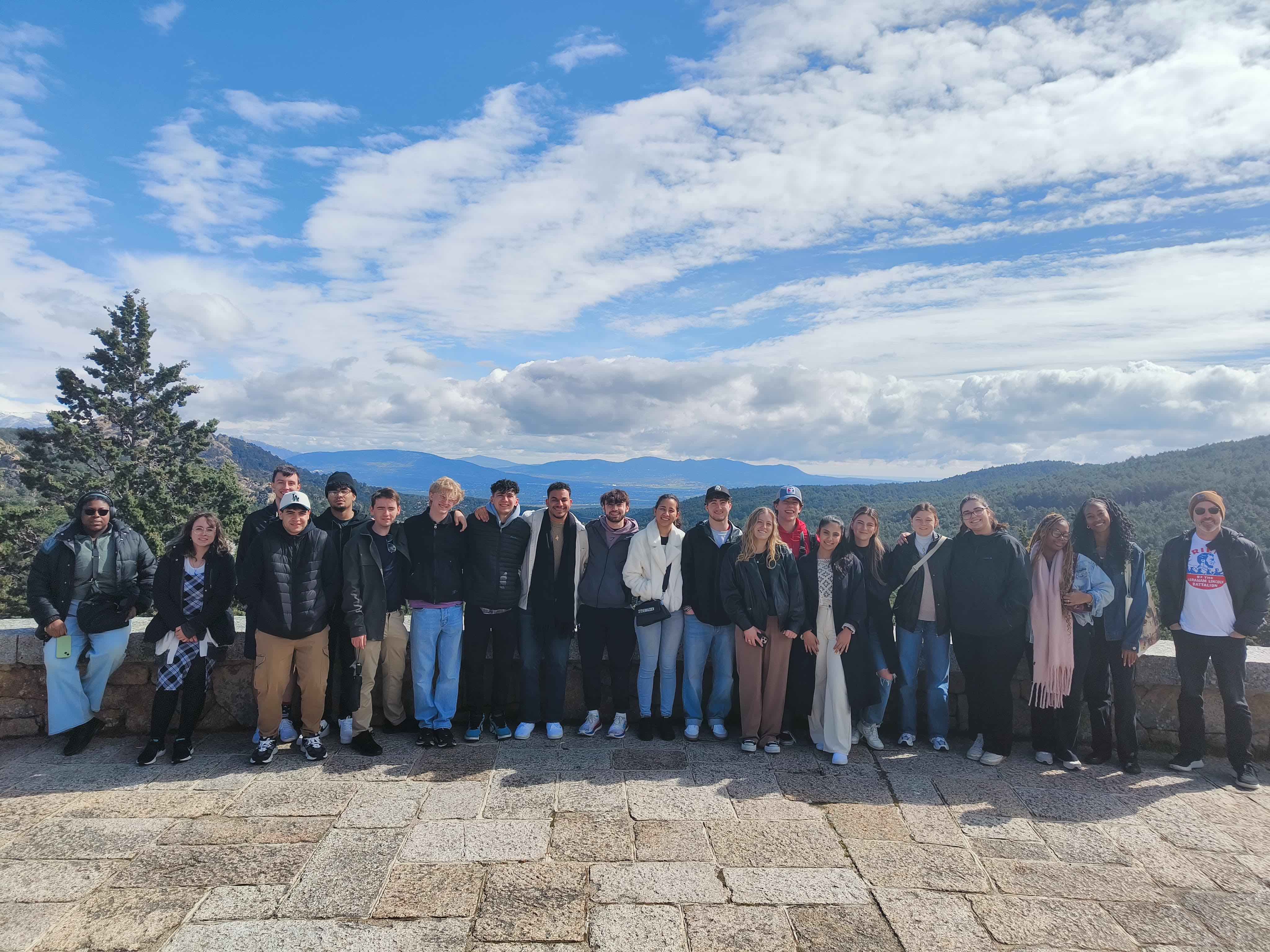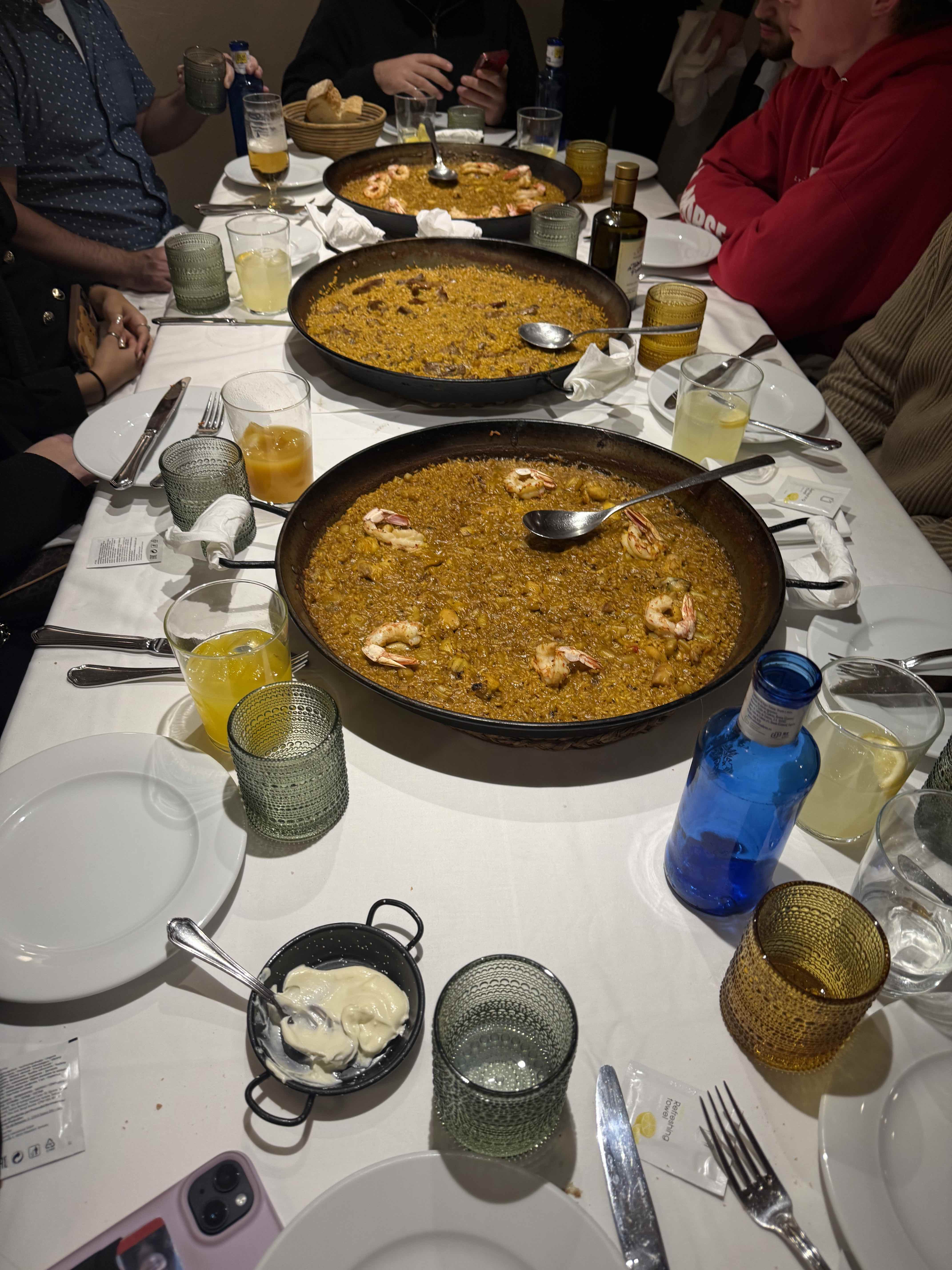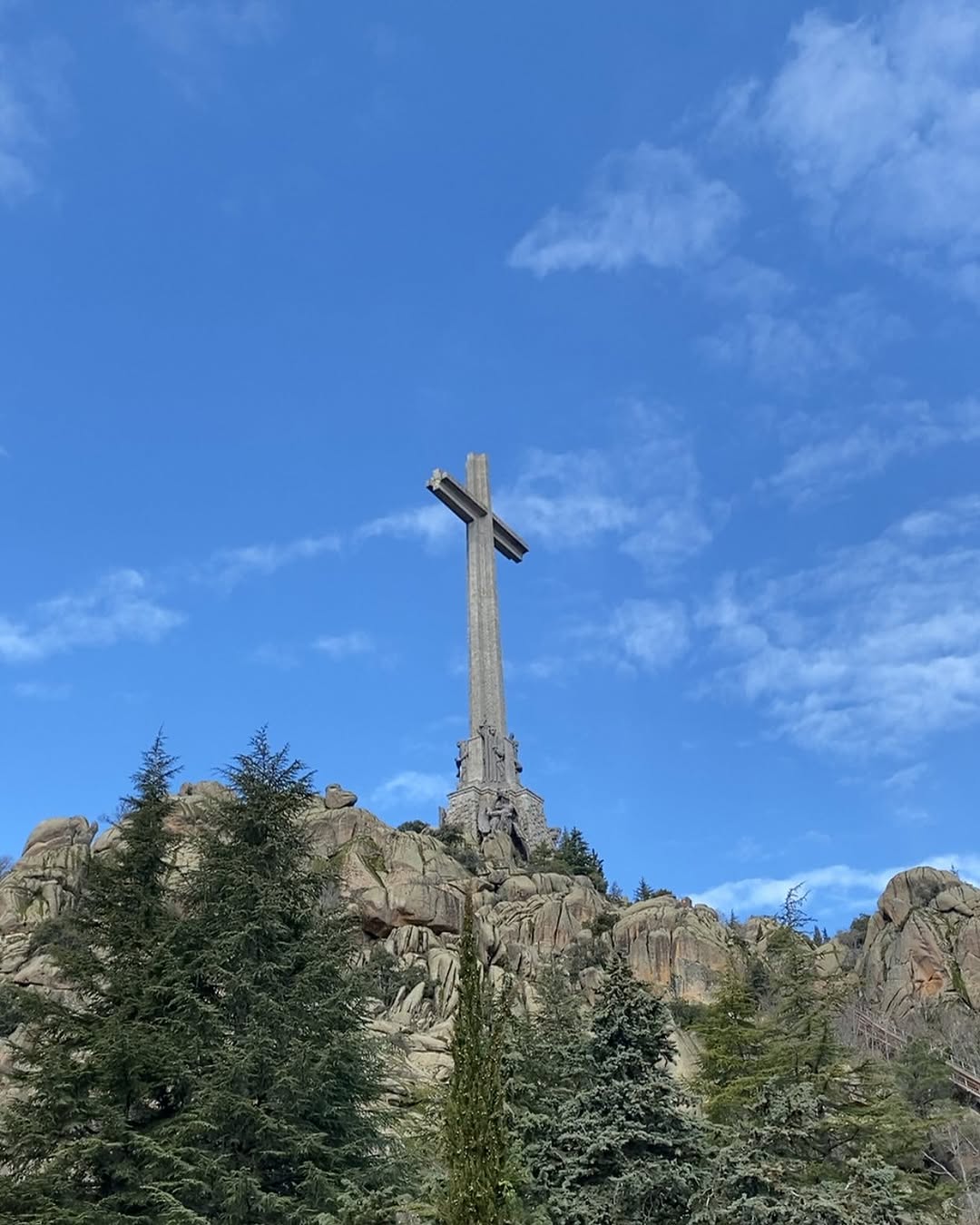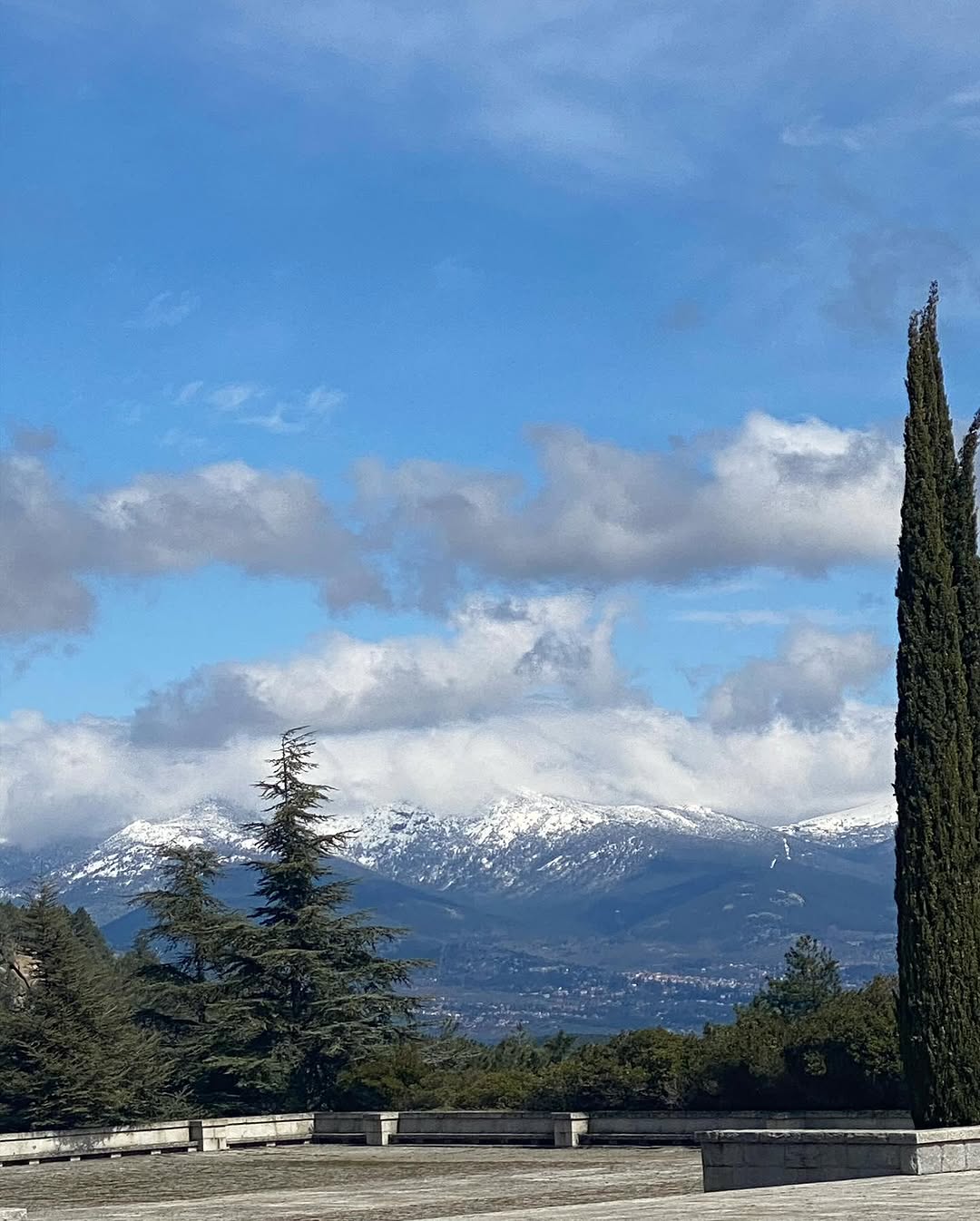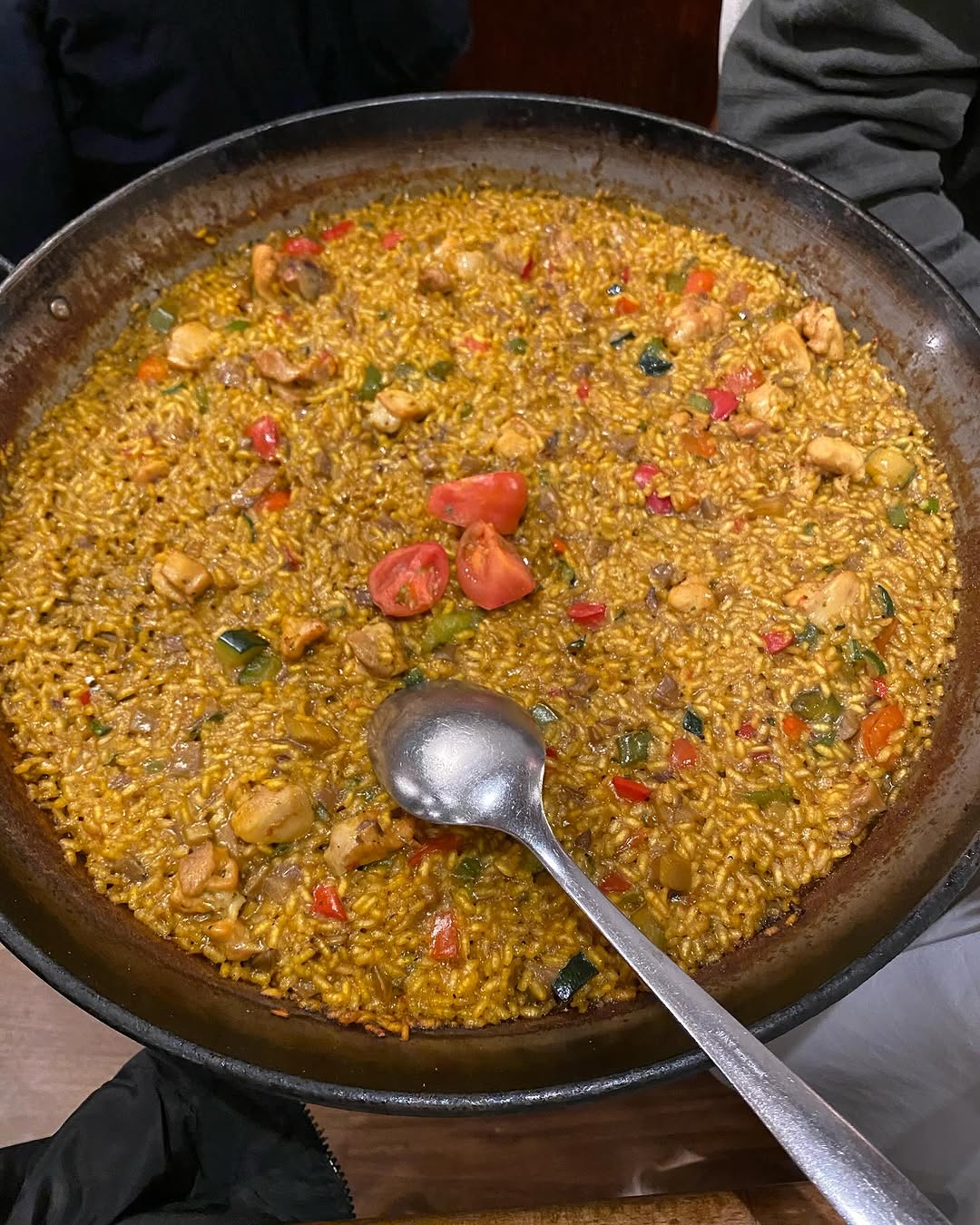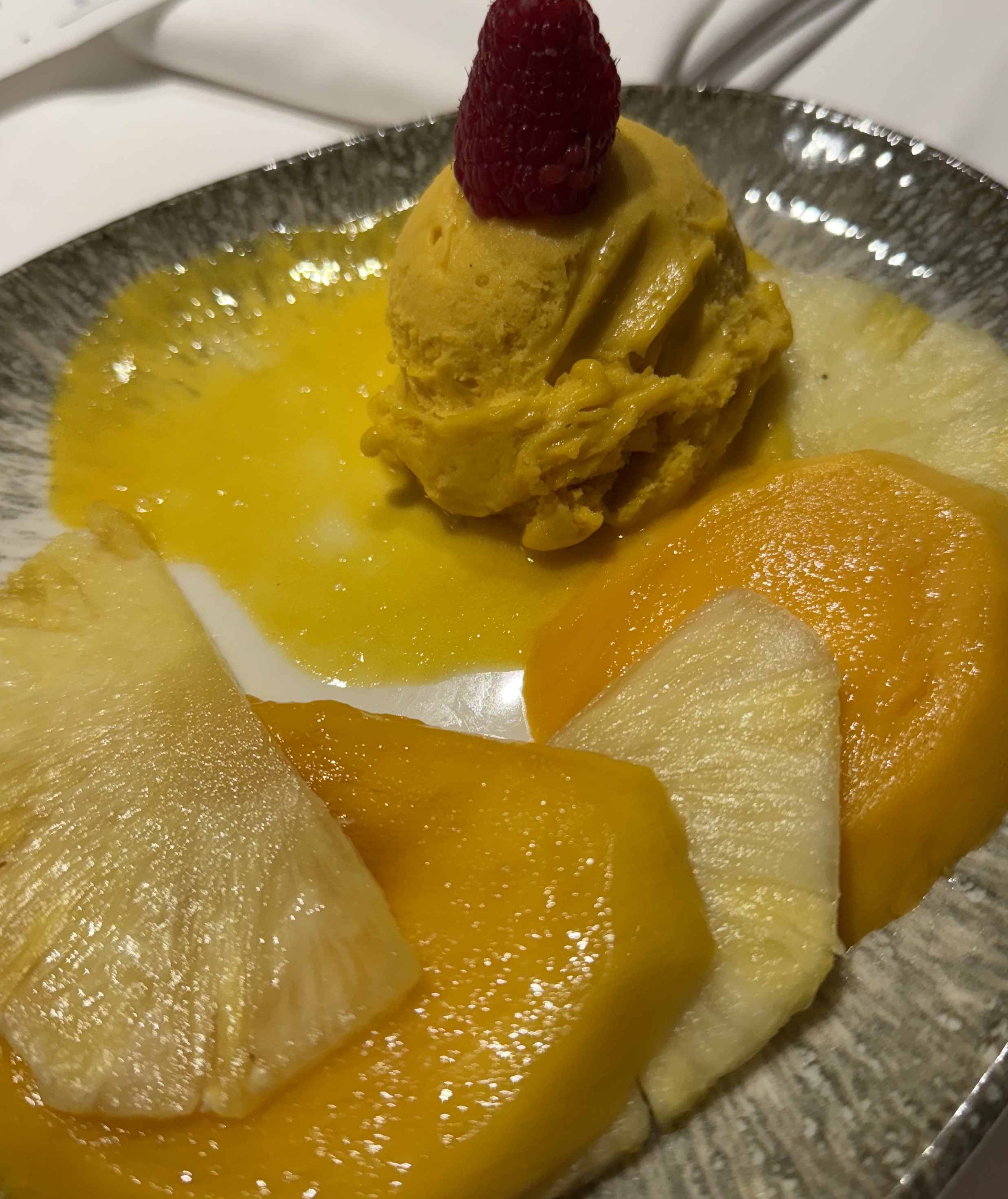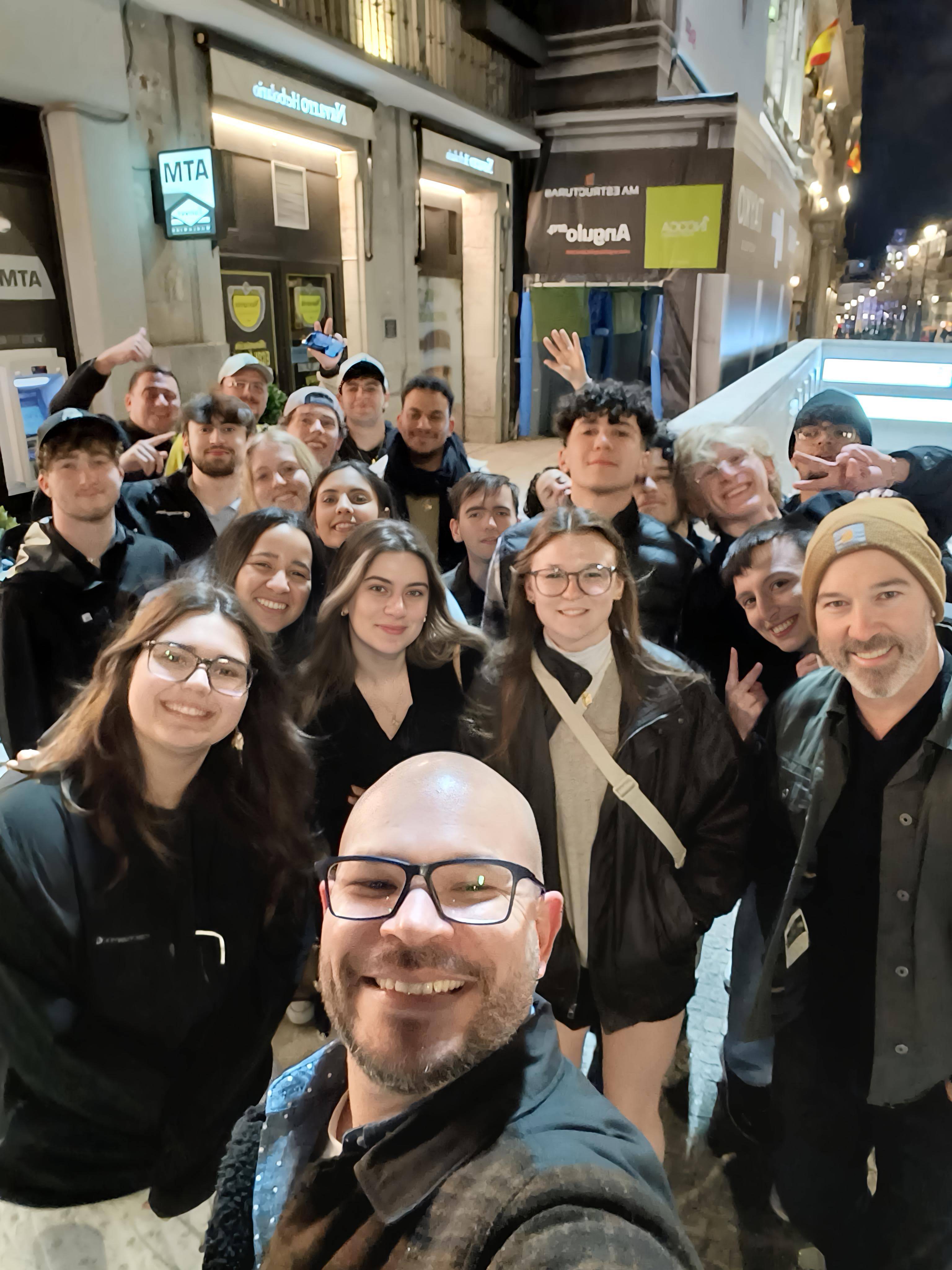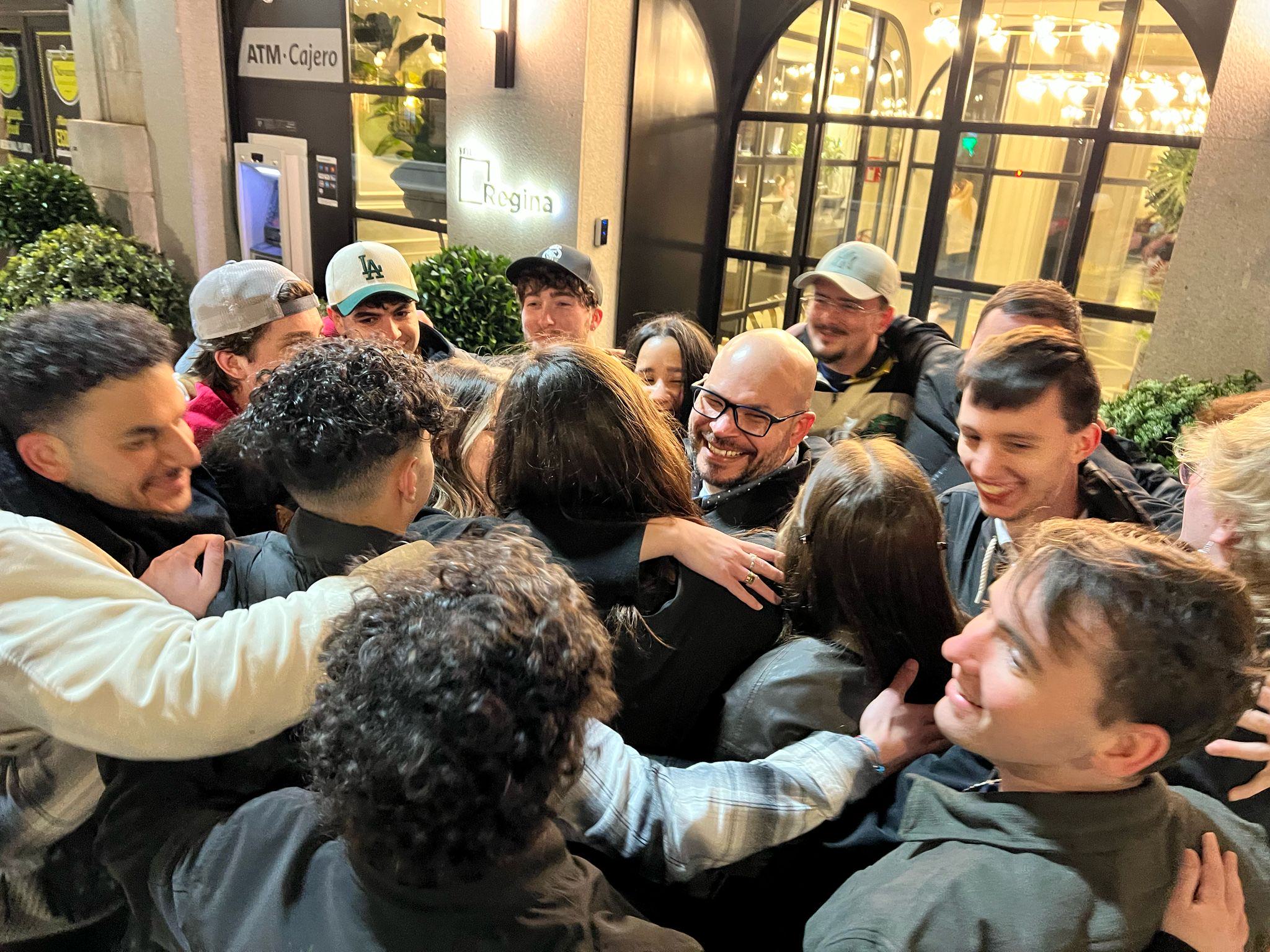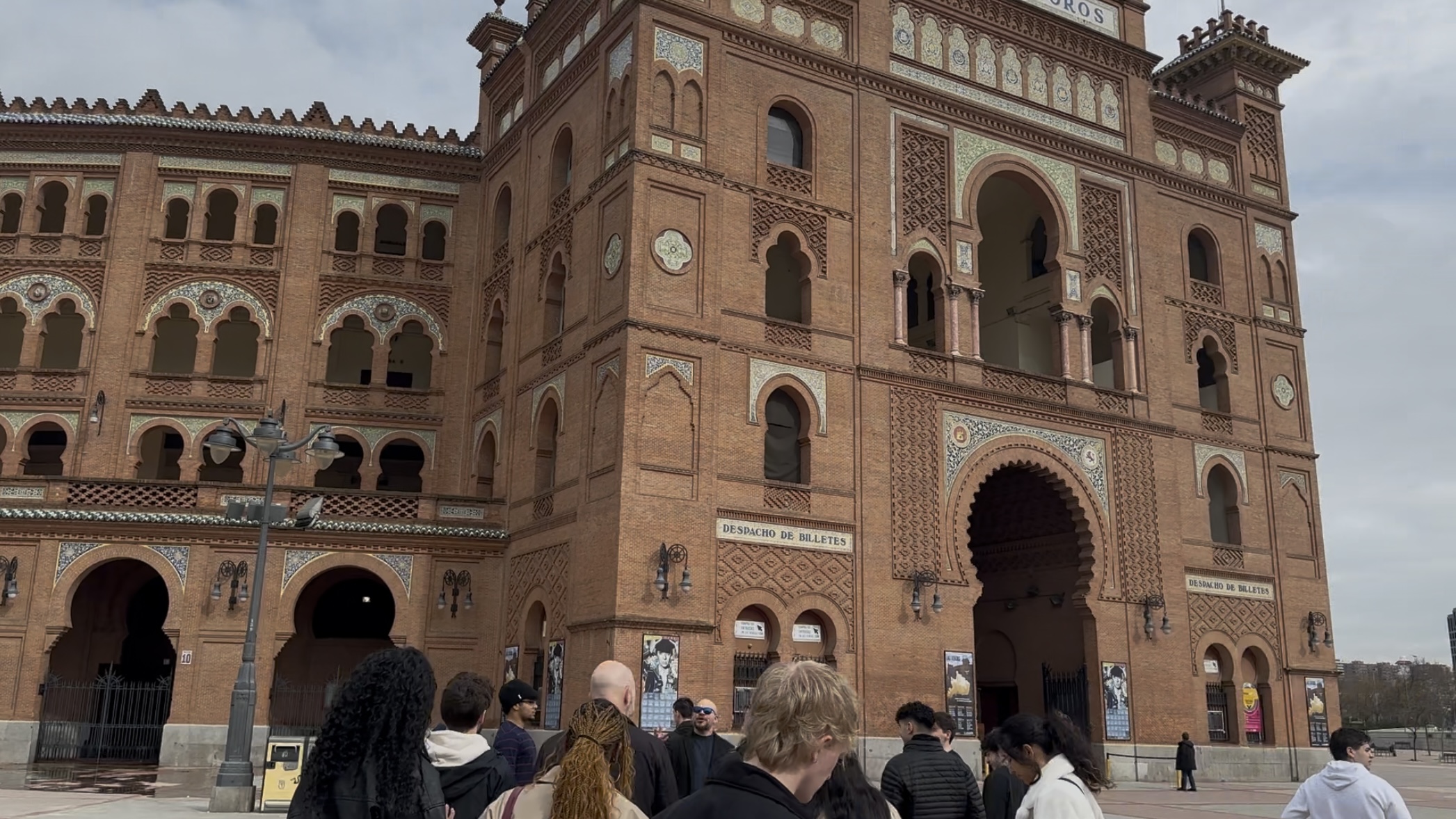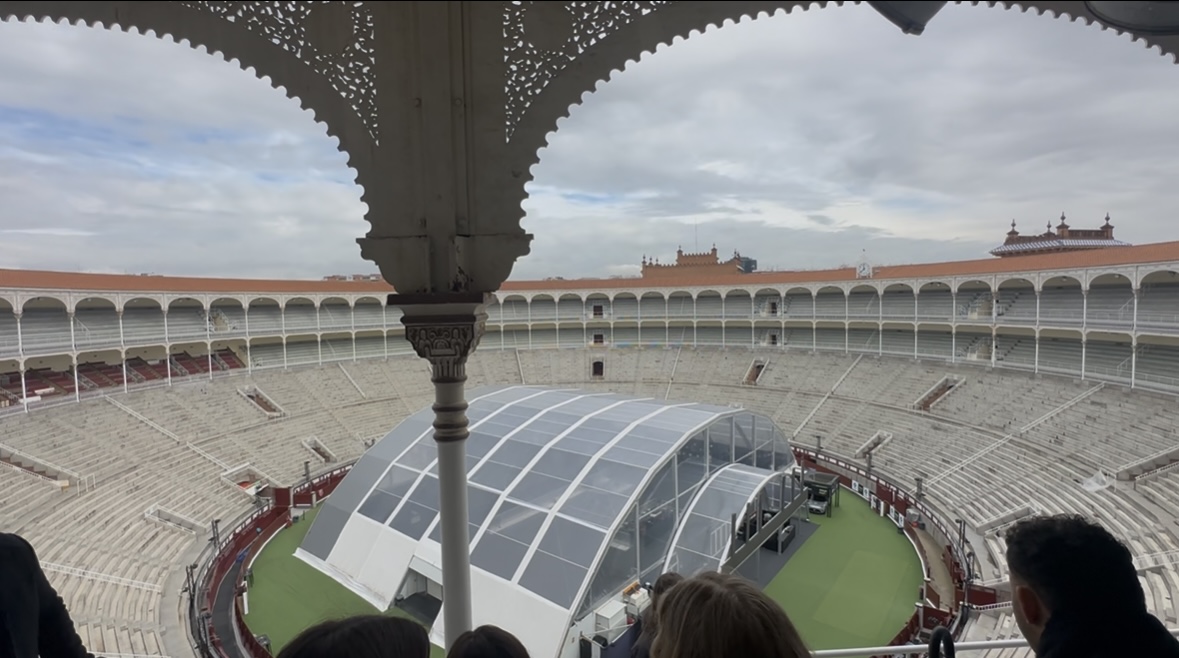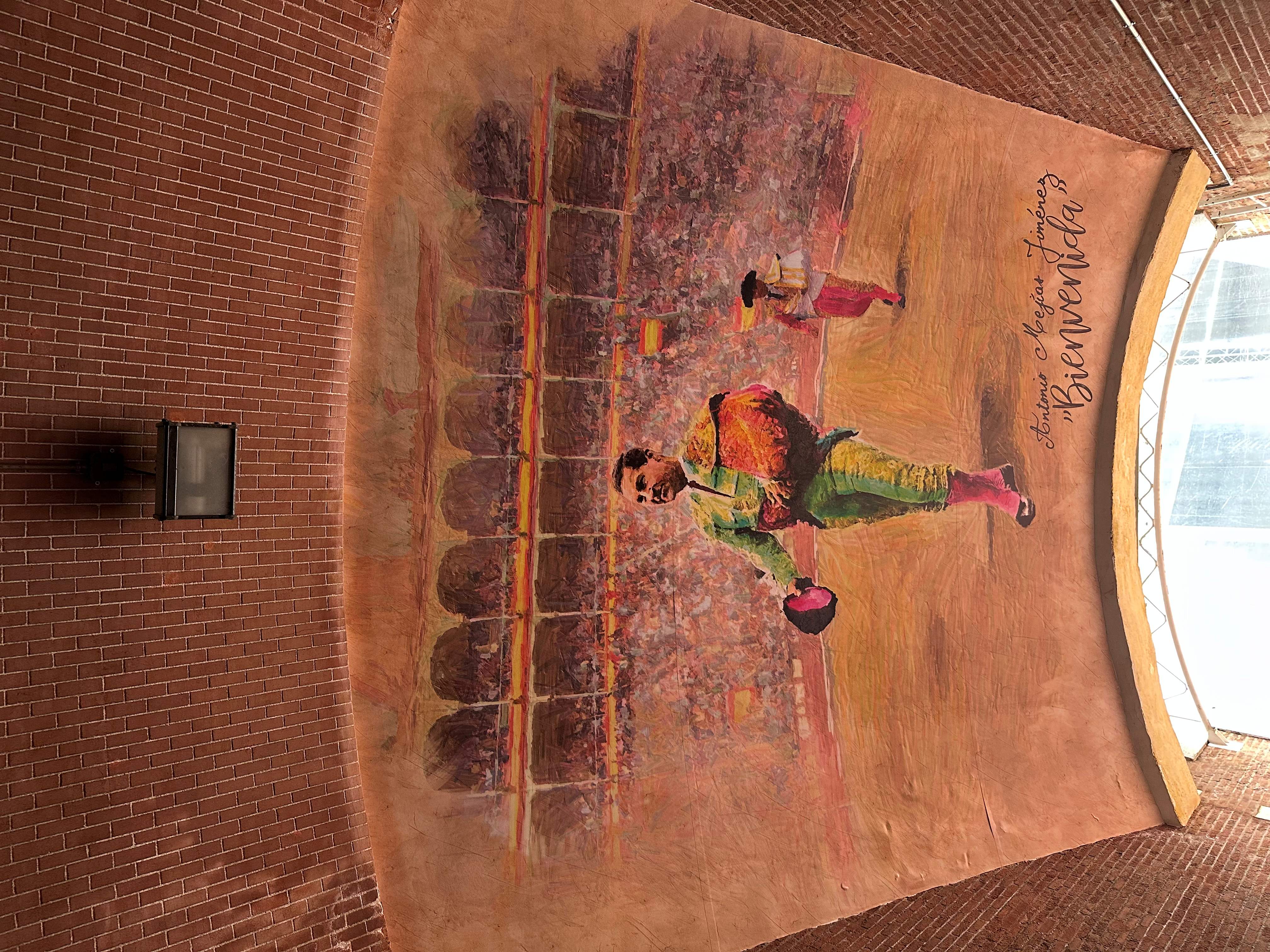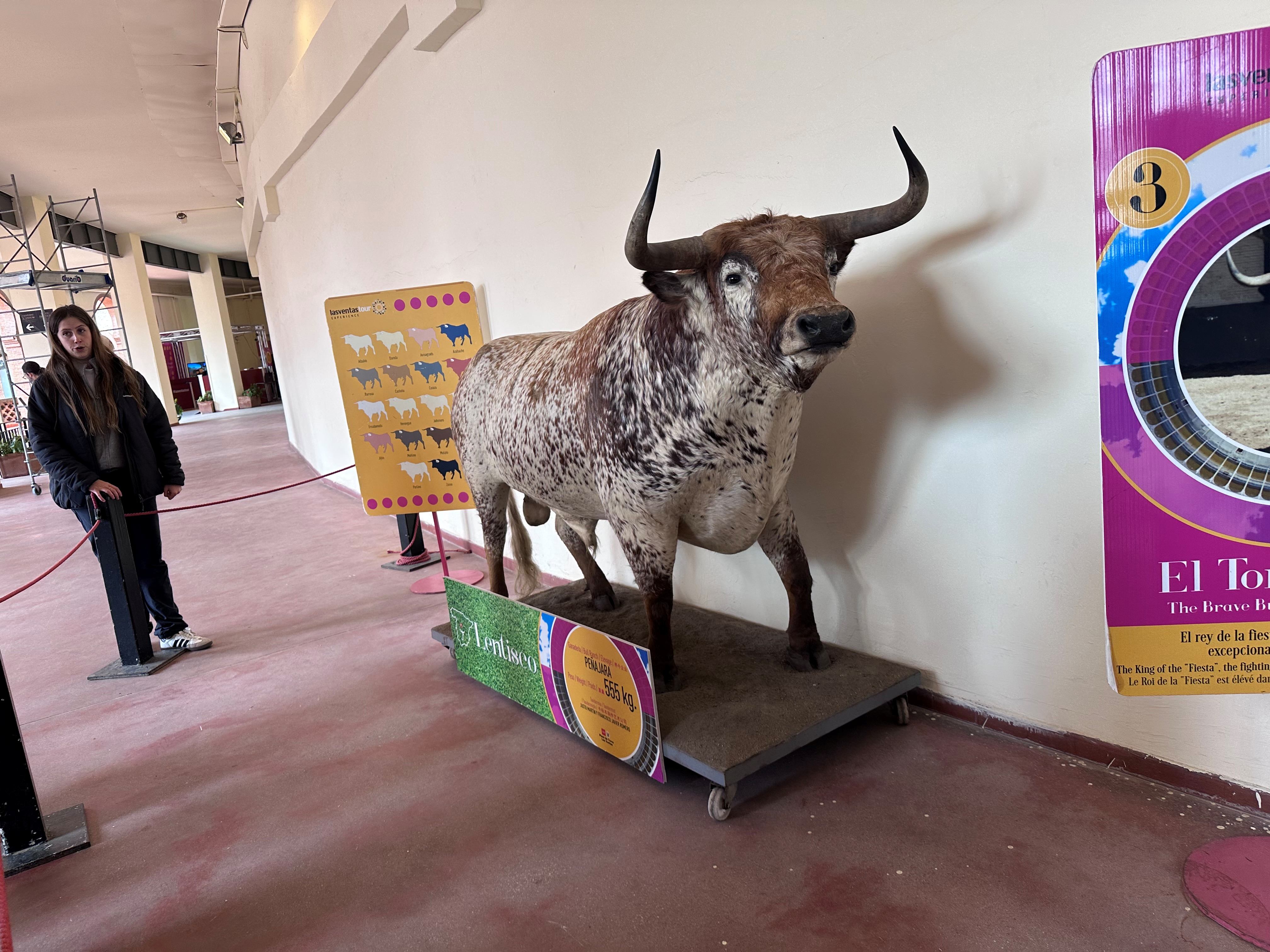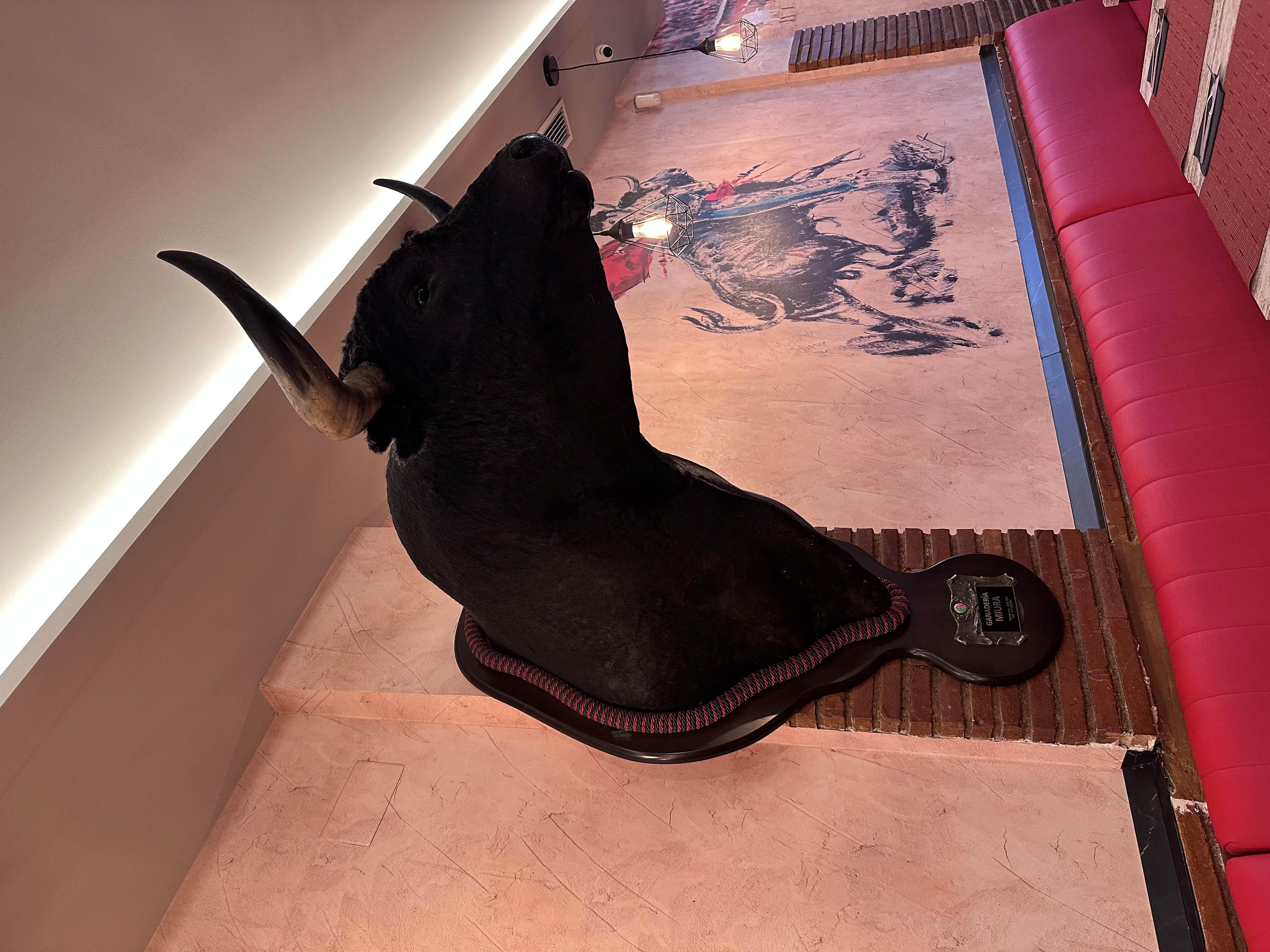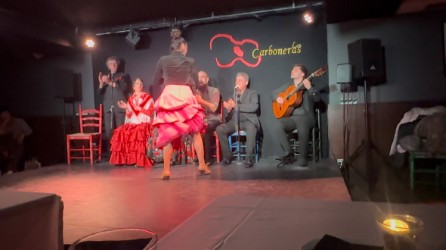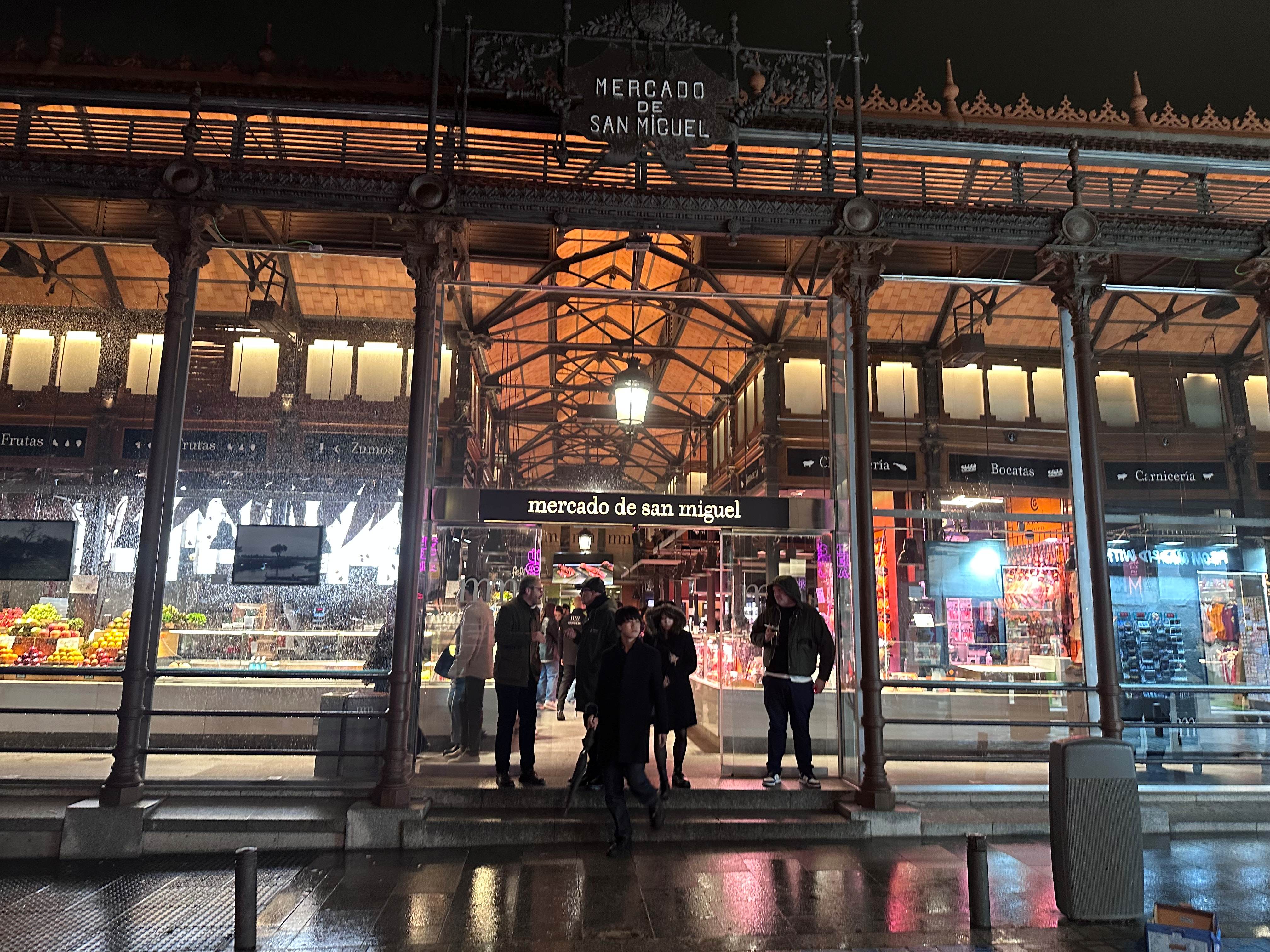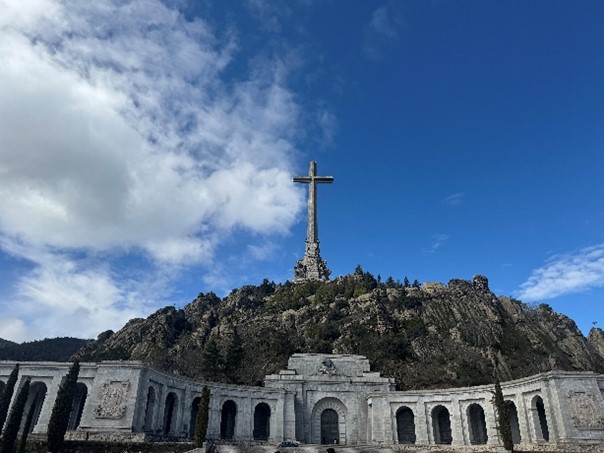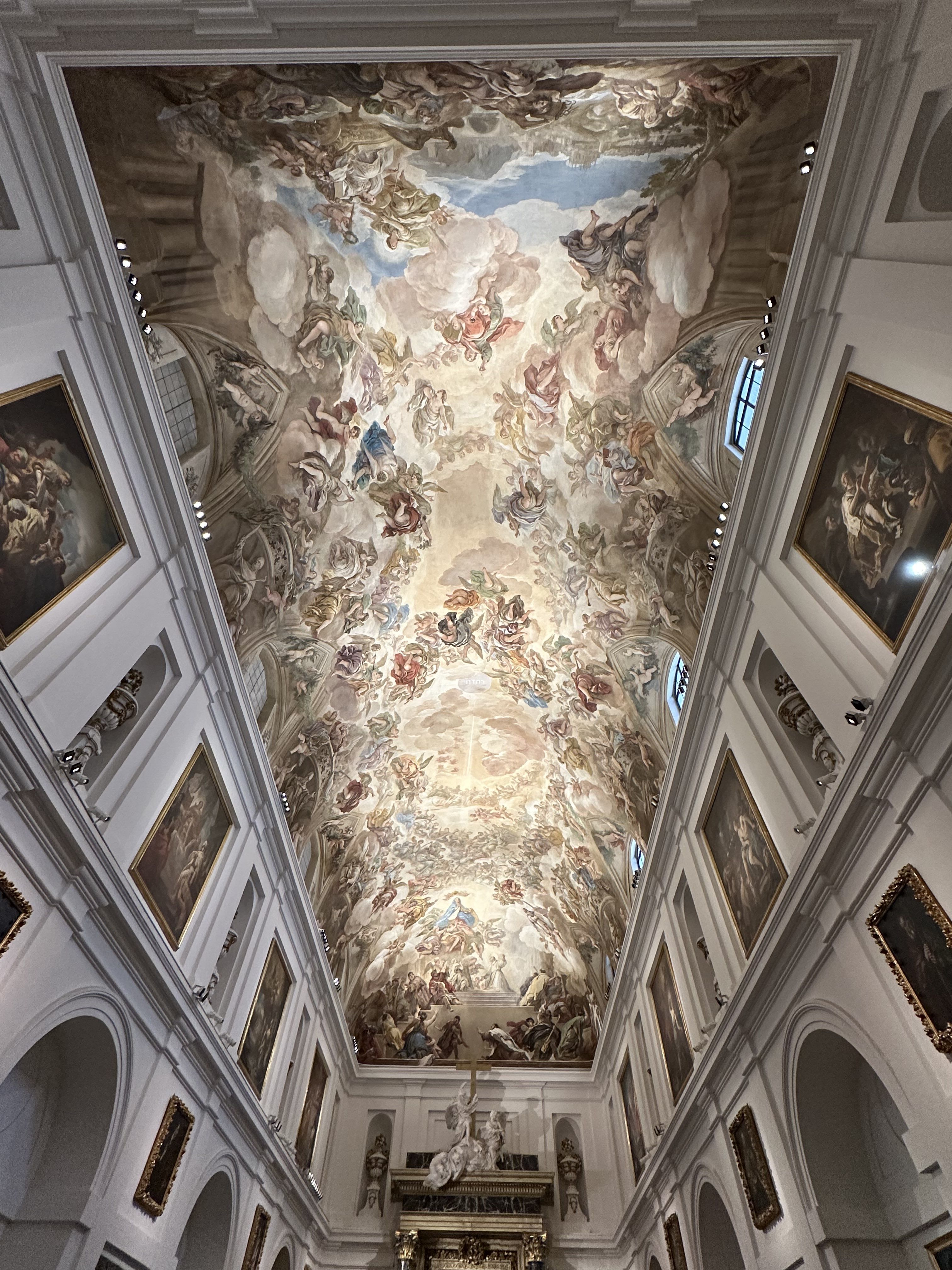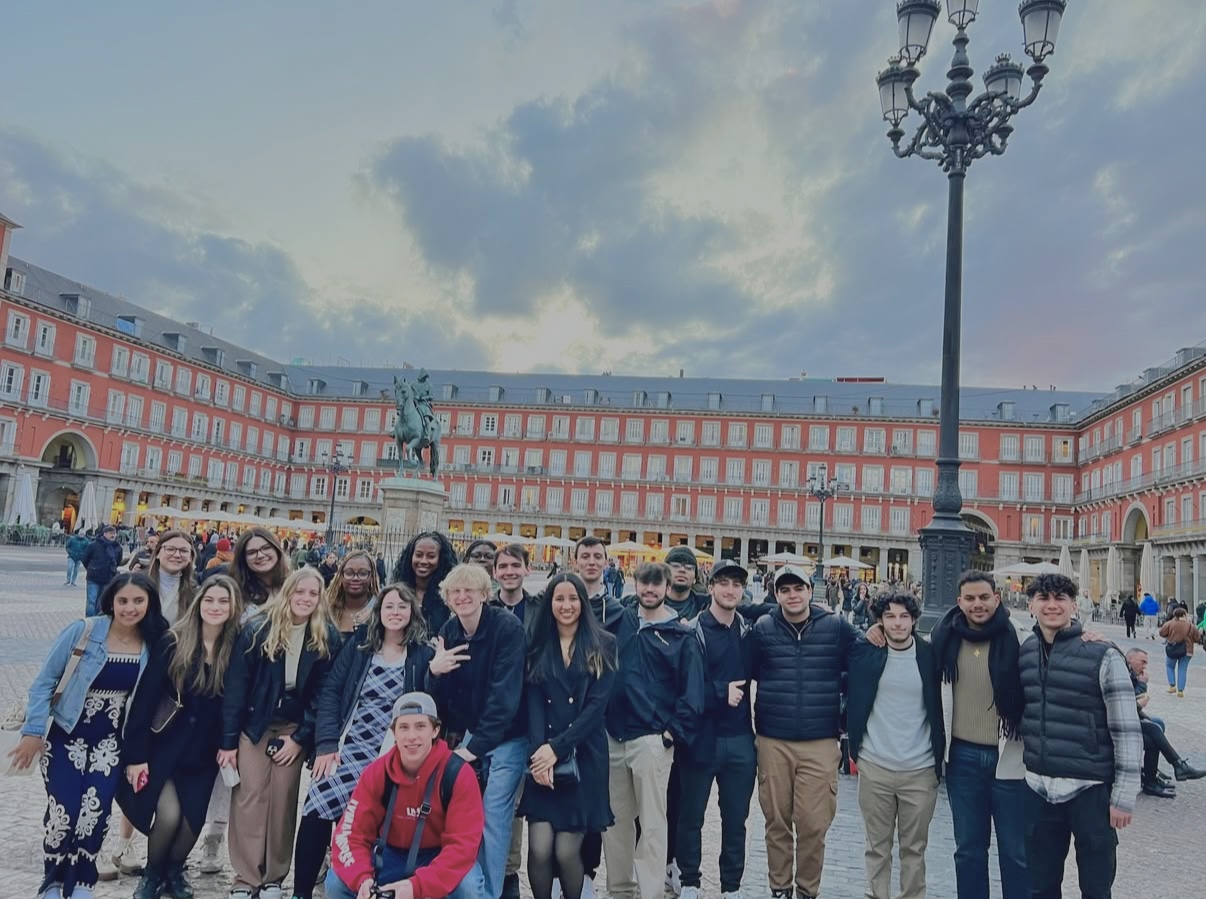
And just like that, it was our last day here in Madrid. I’m shocked over how much we were able to accomplish in just one week. Each day was filled with new experiences—whether it was exploring hidden corners of the city, trying local food, or learning more about Spanish history and culture. As the week came to a close, it didn’t feel real that we’d be leaving so soon. Our final day was bittersweet: a chance to soak up the city one last time, reflect on the memories we made, and say goodbye (for now) to a place that quickly started to feel like home.
To start off the day we went to Valley of the Fallen. Located in Sierra de Guadarrama mountains was a beautiful 500-foot-tall cross, one of the tallest in the world. This monument was dedicated for all the people who died during the Spanish Civil War. Over 33,000 people are buried here including Franco himself who was buried there in 1975, but was then relocated in 2019 to a family cemetery.
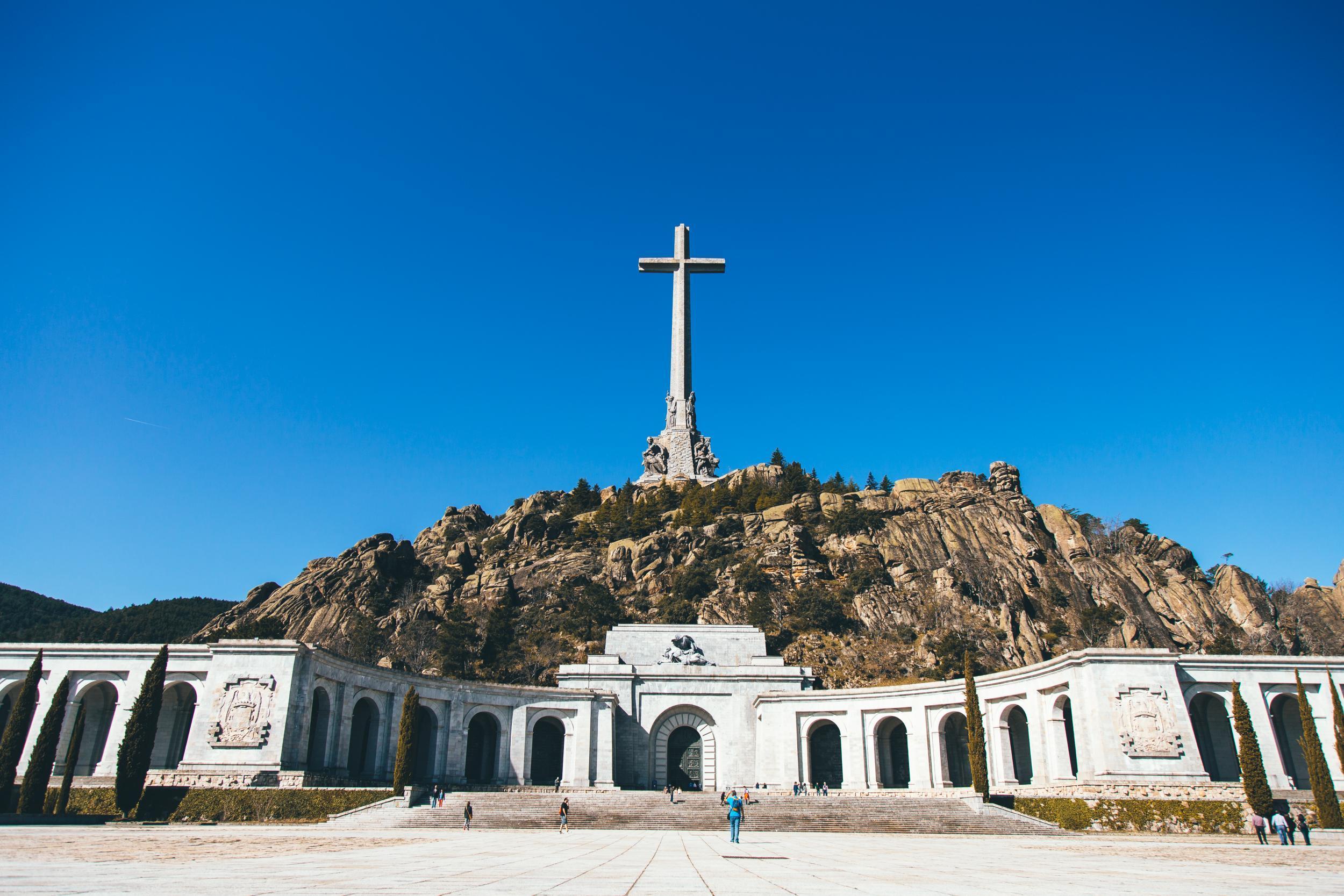
Following our visit we went to lunch at La Fragua de Vulcano. This was definitely a hidden gem that spanish locals only know about, but we happened to stumble across by luck. The restaurant was very cozy inside with a rustic atmosphere to it. The food was also phenomenal. Every bite was packed with so much flavor. By far this was my favorite restaurant we visited in Madrid. Chatting with the locals there was also a highlight. The Spaniards we met were incredibly friendly and welcoming, always happy to share a story or recommend their favorite dish.
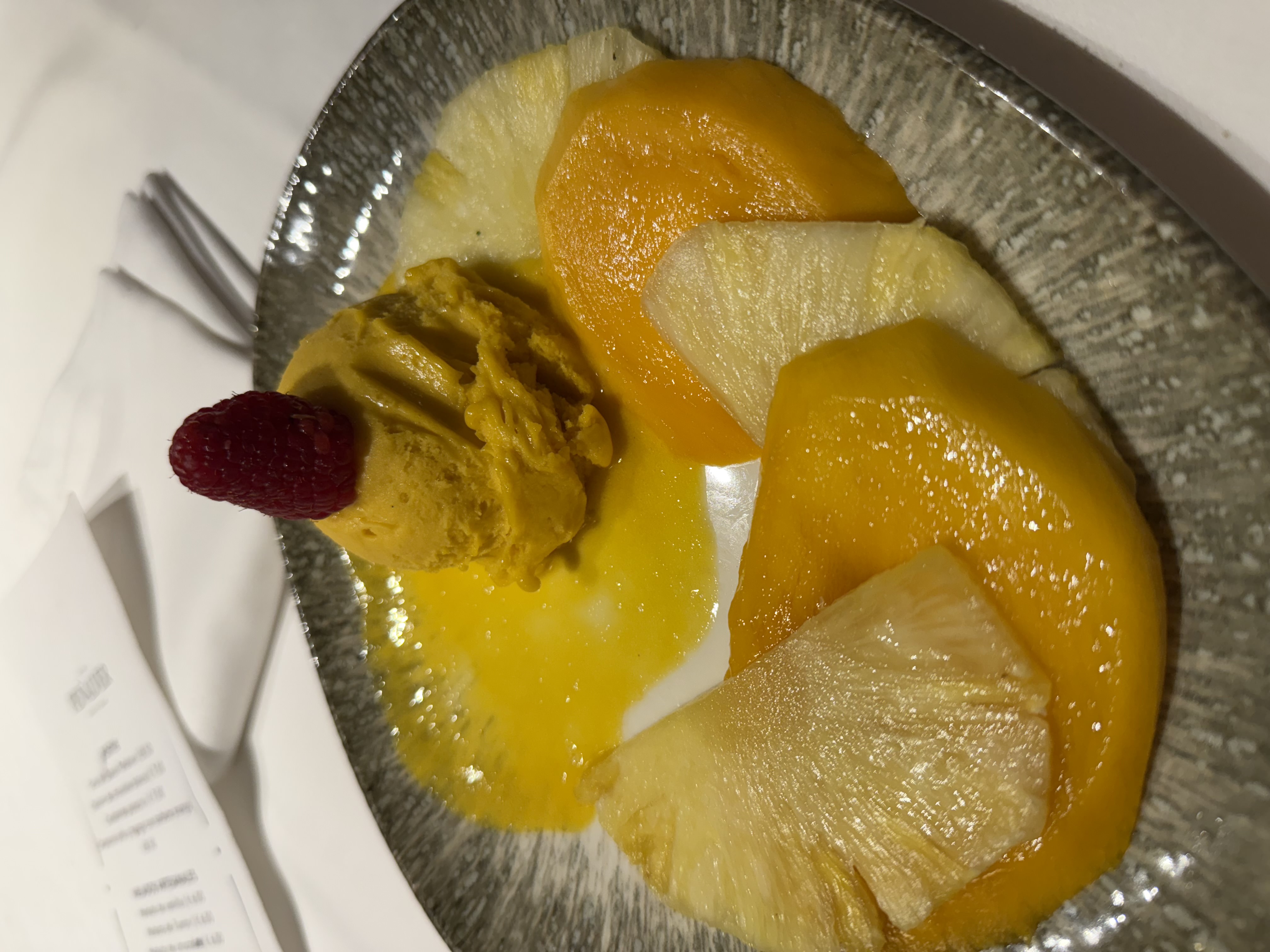
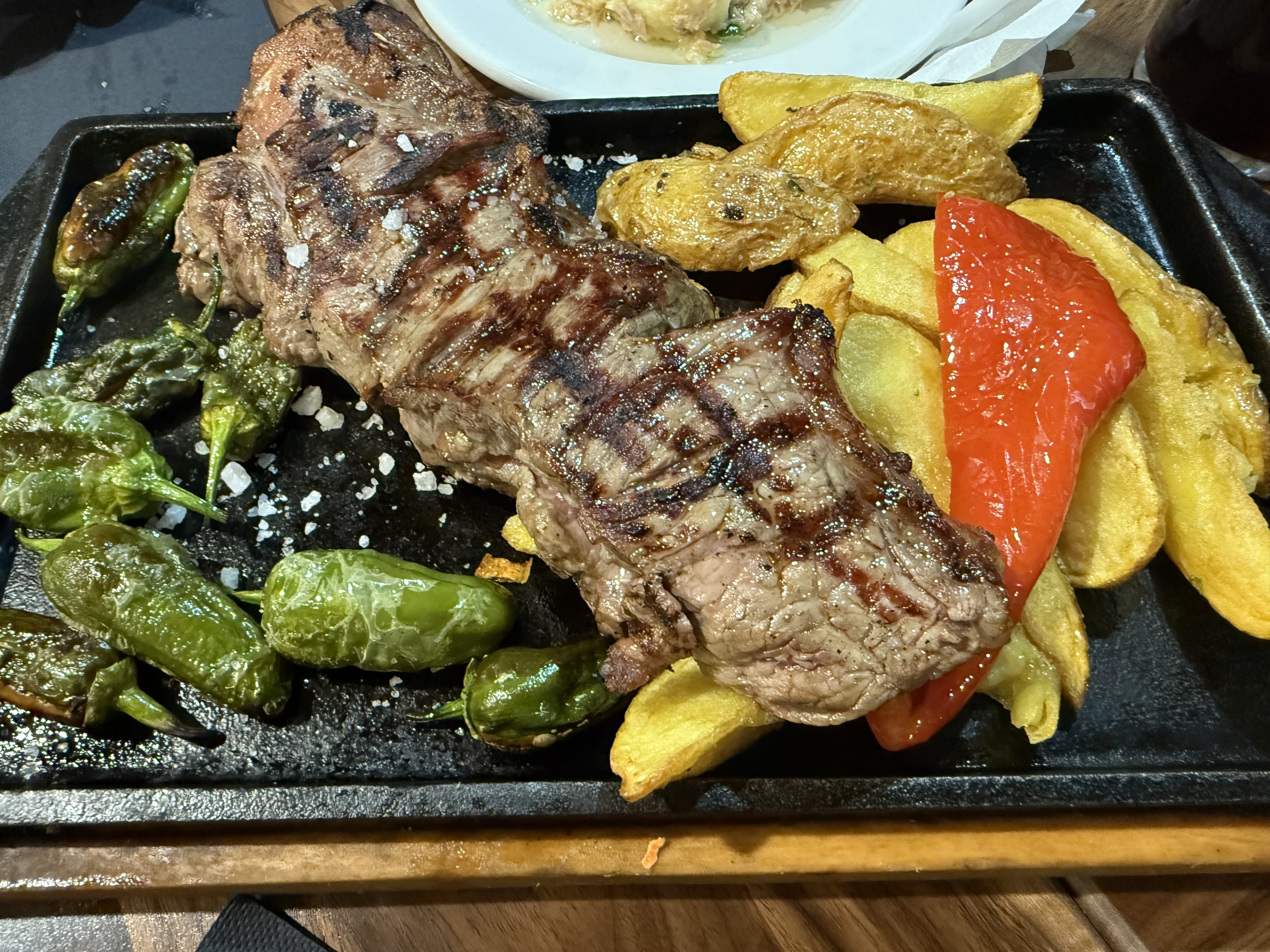
After lunch, I did some shopping at Gran Via, one of the busiest and most iconic streets in Madrid. The energy there was contagious—locals and tourists weaving through shops, music playing from storefronts, and the architecture towering above in every direction. I picked up a few souvenirs to bring home with me. Walking down Gran Vía felt like the perfect way to end the trip: a final stroll through the heart of the city, surrounded by all the color and life that makes Madrid so special.
At 7:00PM we had our last farewell dinner with the whole group. It was a bittersweet moment—everyone dressed up a little, laughing, taking pictures, and trying to soak in the final hours together. We ate paella, which felt like the perfect dish to close out our time in Spain. The pan came out sizzling, full of vibrant colors and flavors—seafood, rice, saffron, and that signature crispy bottom layer everyone fights over. We passed plates around, shared memories from the week, and talked about everything from our favorite moments to how strange it would feel to back home the next day.
What started as a short study abroad trip quickly became something much more—an experience full of learning, laughter, and connection. From standing in front of centuries-old monuments to sharing meals and stories with new friends, I’m walking away with memories I’ll carry for a lifetime. Saying goodbye was tough, but I know this isn’t the end—just the beginning of many more adventures to come.
